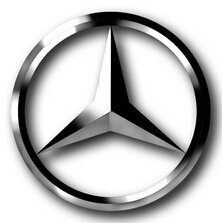The Analysis of Diesel Engine Exhaust Smoke
Posted: 2014-04-16 04:21:13 Hits: 7841
The information below is primarily aimed at diesel engines, since they commonly have the most smoke problems, it will also help with petrol engines and 2-stroke petrol/oil fueled engines.When it occurs, the Color of diesel engine exhaust smoke can tell you a lot about the internal condition of a diesel engine.
SMOKE COLOUR
Basically there are 3 types of smoke emitted from a diesel engine: black, blue and white.
Normally, smoke from a diesel engine indicates that something is not right. Smoke should be taken as an indication that there is a problem existing (or developing) that will potentially shorten the engine life, or result in unnecessary costs.
Smoke should be regarded as an opportunity to take measures that will save you money in both long and short term. At first, smoke may be due to a simple problem, which is causing poor combustion efficiency and costing you in excessive fuel bills such as carbonated up engine from excessive idling, stop-start operation or short run times. At the other end of the scale, smoke may be your last chance to act before a catastrophic engine failure occurs such as piston seizure, valve or turbocharger failure.
A diesel engine in good condition should produce no visible smoke from the exhaust, under most operating conditions. A short puff of smoke when an engine is accelerated under load may be acceptable, due to the lag before the turbocharger speed and air flow is able to match the volume of diesel injected into the cylinders, but that would only apply to older technology diesel engines. In modern type diesels, no smoke at all should be evident.
BLACK SMOKE
Black smoke is the most common emitted from diesel engines and indicates incomplete combustion of the fuel. Black smoke causes can vary widely and include:
Incorrect fuel injection timing: commonly too retarded;
Fuel injection pump wear, or incorrect settings: commonly retarded;
Faulty cold start, or faulty advance/retard mechanisms: commonly retarded;
Incorrect air/fuel ratio setting: excessive fuel to air ratio;
Under-performing turbocharger: pressure low;
Dirty or worn fuel injectors: commonly carbon deposits affecting spray pattern;
Carbon deposits in combustion chambers: common in lightly loaded engines;
Excessive carbon build-up around exhaust valves and exhaust spaces;
Sticking piston rings: often due to carbon deposits;
Glazed cylinder cross-hatch: due to carbon deposits;
Incorrect valve clearances: often timing error when replacing cam-belts;
Faulty valve stem seals: rarely;
Engine wear in general: often misdiagnosed when carbon deposits are the real problem;
Engine oil viscosity too low: check oil grade against operating conditions;
Cool operating temperatures: coolant should reach 85C, or higher. Check thermostats;
Exhaust gas recirculation (EGR) system faulty, or blocked with carbon;
Engine overloaded: reduce load, use lower gear, clean the anti-foul, and change propellor pitch;
High altitude operation: lack of oxygen to complete fuel burn;
Dirty or restricted air cleaner systems: air intake filter partially blocked;
Poor quality fuel.
Black smoke can occur across the entire operating range, but is usually worst under full power, or during the lag before the turbocharger boosts air supply to match the fuel usage such as in the early stages of acceleration and during gear changes. Moderate turbo lag smoke may be acceptable, otherwise black smoke should be hardly visible in a correctly running engine.
Obviously, worn or damaged components must be replaced: the earlier you identify and fix the problem, the less damage will be done. Keep on top of engine tune issues, including valve adjustments, regular servicing of air, fuel and oil filters. Do not buy fuel from suspect outlets. Dirty engine components, such as fuel injectors can be easily restored to full cleanliness by using an effective and reliable fuel system cleaner.
Black smoke is high in carbon or soot, which is an undesirable product of diesel combustion. The combustion of diesel is a complicated process of breaking down the various hydrocarbon fuel molecules into progressively smaller and smaller molecules, by extremely rapid burning (explosion) in the presence of oxygen. The main and ideal end products of combustion are CO2 (carbon dioxide a greenhouse gas) and water. It is believed that the last step in the process is carbon monoxide (a poisonous gas) to carbon dioxide. This is also the slowest step by far and when combustion conditions deteriorate some upstream bottle necking occurs in the chain of combustion reactions. This results (according to some authorities) in polymerization of smaller partly burnt molecules into much larger ones, which become visible as soot, or black smoke.
BLUE SMOKE
Blue smoke is caused by engine lubricating oil burning. The oil can enter the combustion chamber from several sources including:
Worn valve guides, or seals;
Cylinder &/or piston ring wear;
Cylinder glaze;
Piston ring sticking;
Incorrect grade of oil: too thin and getting past rings, or valves guides;
Fuel dilution of the oil, making it too thin.
Blue smoke is often evident at cold start, which can reflect reduced oil control due to carbon fouling deposits around the piston rings and/or cylinder glaze (which is actually carbon deposited in the machined cylinder crosshatching. These tiny grooves actually hold a film of oil, which in turn completes the seal between the combustion chamber and the oil wetted crankcase).
Blue smoke should not be evident at any stage.
An engine may actually burn oil without the evidence of blue smoke, because good compression burns oil quite cleanly, however, it is not acceptable for any new engine, or engine in good internal condition to burn large amounts of lubricating oil: with or without blue smoke.
Once again, restore physical cleanliness to all components. Replace worn parts where necessary. In some situations, where the engines are pretty worn, but you just need to keep them in service, cleaning with the previously mentioned products, followed by effective additional anti-wear protection, will reduce internal stresses on all those tired components, providing extended service life. Our achieves this for many of our customers.
WHITE/GREYISH SMOKE
White smoke is caused by raw, unburnt fuel passing into the exhaust stream. Common causes include:
Incorrect fuel injection timing;
Defective fuel injectors;
Low cylinder compression.
Low cylinder compression may be caused by leaking valves, sticking piston rings, ring wear, cylinder wear, or cylinder glaze.When white smoke occurs at cold start and then disappears as the engine warms up, the most common causes are fouling deposits around piston rings and/or cylinder glazing. Continuous evidence of white smoke indicates a mechanical defect, or incorrect fuel timing.
Water entering combustion spaces will also create white smoke. Faulty head gaskets and cracked cylinder heads or blocks are a common cause of water entry. Unfortunately, expensive mechanical repair is the only proper solution here.



